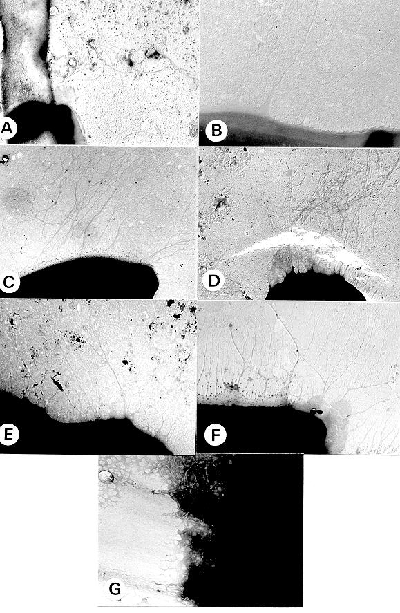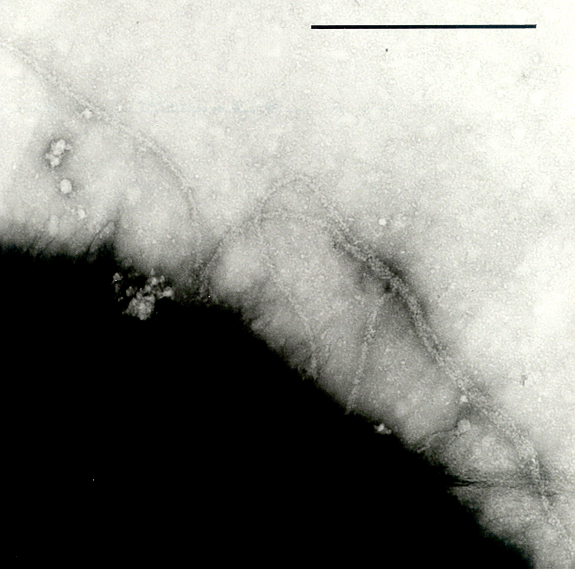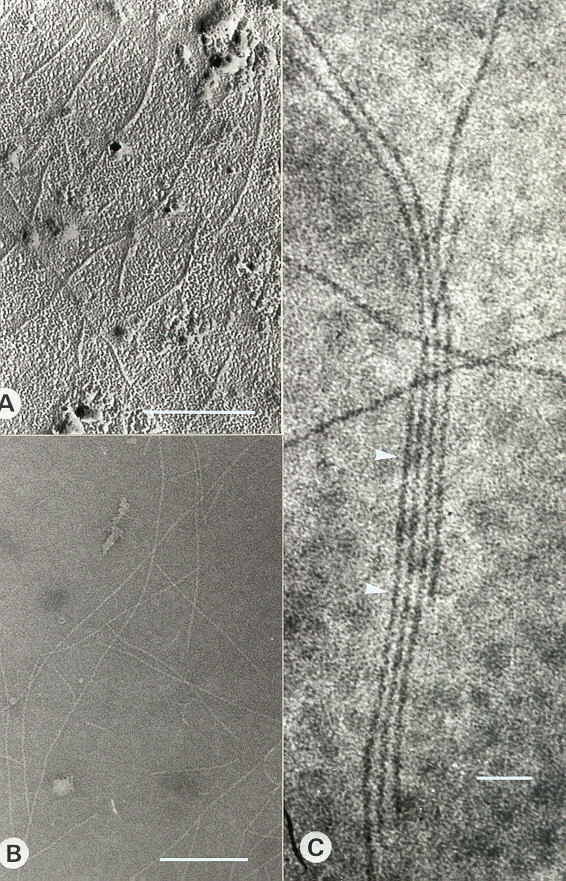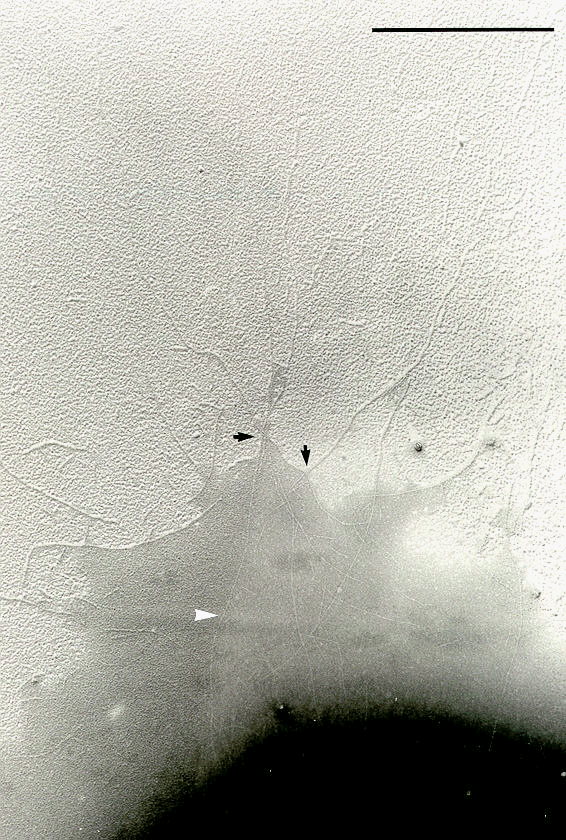

Fungal Fimbriae
The cells of Microbotryum violaceum (Ustilago violacea), the anther smut fungus, extrude numerous hair-like appendages termed fimbriae. The fimbriae of M. violaceum are similar to bacterial pili in that they are flexuous, proteinaceous fibrils, having a helical structure, a diameter of 7 nm and a variable length - often exceeding 15 microns. The fimbrial protein consists of a 74,000 dalton subunit with a carbohydrate moiety and RNA internal component. Fimbriae have been observed on a wide range of fungal mycelia in all the major Phyla (Oomycetes, Zygomycetes, Ascomycetes and Basidiomycetes). Their length and distribution however is seen to vary in these differing organisms. The role of the fibrils is still being elucidated but it seems clear that they are important for cell-to-cell communication, mating and pathogenicity.
 |
A - Urocystis occulta
B - Ustilago aegilopsidis
C - Ustilagto hordei
D - Ustilago turcomanica
E - Ustilago kolleri
F - Ustilago maydis ( A to F shadowed; 12, 000 X) G - Ustilago avenae |

M. violaceum fimbriae decorated with anti-fimbrial antibody. Bar 1 micron.

Electron micrograph of isolated fimbriae of M. violaceum.
A - Shadowed preparation (Bar 1 micron)
B - Negatively stained (Bar 500 nm)
C - Higher magnification of C (printed in reverse; Bar 100 nm)

M. violaceum sporidial cell which has been negatively stgained then shadowed to show the fimbriae. Bar 1 micron.
Melanin
Many fungi produce melanins either in their vegetative cells, specialized structures or resting spores. Melanins protect these organisms from environmental factors such as desiccation, UV light or lytic attack. In the case of plant pathogens melanins allow the fungus to survive in the field from season to season. Working with Dr. Michael Bulter, we are interested in understanding the structure and biochemistry of fungal melanins with the goal of controlling pathogenic organisms, both plant and animal.